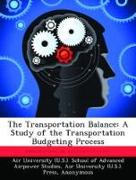The Transportation Balance: A Study of the Transportation Budgeting Process
BücherAngebote / Angebote:
This study analyzes the way the Department of Defense currently funds the Defense Transportation System (DTS). The central question that this study attempts to answer is does the current decentralized, service-centered, budgeting process optimize national mobility capabilities or would centralized budget authority, under United States Transportation Command (USTRANSCOM), offer greater potential for balancing mobility capabilities and requirements? To answer this question this study examines the current process employed to maintain the DTS and comparing the current system to one possible alternative: US Transportation Command Budget Authority. The study accomplishes this by first describing the objective of the budgeting process, which is to balance limited lift capabilities against demanding requirements, and follows this description of the transportation balance with a brief description of the DTS. The study continues with an analysis of the current process used to support the balance of this DTS. This analysis includes a study of the planning, programming, and budgeting system (PPBS) from both the Navy and Air Force perspective and the impact this system has on the transportation system. After the study of the PPBS this study describes the Joint Requirement Oversight Council and its influence on the DTS. This study then describes one alternative to the current process and its potential for maintaining the transportation system in balance. The proposed alternative grants USTRANSCOM budget authority for Major Force Program 4 airlift and sealift program elements. After the description of the proposed alternative budgeting system this study examines US Special Operations Command budget authority and its' affect upon the Special Operations Mission. This study then examines examples of USTRANCOM's limited budget authority. This study concludes by saying that the proposed process could more effectively support the DTS balance than the current process. It also addresses
Folgt in ca. 15 Arbeitstagen

